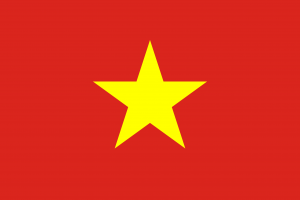Language/Vietnamese/Culture/Mid-Autumn-Festival
 Հայերէն
Հայերէն Български език
Български език 官话
官话 官話
官話 Hrvatski jezik
Hrvatski jezik Český jazyk
Český jazyk Nederlands
Nederlands English
English Suomen kieli
Suomen kieli Français
Français Deutsch
Deutsch עברית
עברית हिन्दी
हिन्दी Magyar
Magyar Bahasa Indonesia
Bahasa Indonesia فارسی
فارسی Italiano
Italiano 日本語
日本語 Қазақ тілі
Қазақ тілі 한국어
한국어 Lietuvių kalba
Lietuvių kalba Νέα Ελληνικά
Νέα Ελληνικά Şimali Azərbaycanlılar
Şimali Azərbaycanlılar Język polski
Język polski Português
Português Limba Română
Limba Română Русский язык
Русский язык Српски
Српски Español
Español العربية القياسية
العربية القياسية Svenska
Svenska Wikang Tagalog
Wikang Tagalog தமிழ்
தமிழ் ภาษาไทย
ภาษาไทย Türkçe
Türkçe Українська мова
Українська мова Urdu
Urdu
| ◀️ Tet — Previous Lesson | Next Lesson — Present Tense Verbs ▶️ |
Introduction[edit | edit source]
The Mid-Autumn Festival, known as Tết Trung Thu in Vietnamese, is one of the most important traditional festivals in Vietnam. It is celebrated on the 15th day of the 8th lunar month, which usually falls in September or early October. This festival is a time for family reunions and a celebration of the harvest season. In this lesson, you will learn about the history and traditions of the Mid-Autumn Festival in Vietnam.
Origins of the Mid-Autumn Festival[edit | edit source]
The Mid-Autumn Festival has its roots in ancient Chinese mythology. It was brought to Vietnam by the Chinese during the Tang Dynasty and has since become an integral part of Vietnamese culture. According to legend, a hero named Hòa Sơn saved the country from a drought by offering sacrifices to the Moon Fairy. To express their gratitude, the Vietnamese people celebrate the Mid-Autumn Festival every year.
Moon Worship and Lanterns[edit | edit source]
During the Mid-Autumn Festival, the moon takes center stage. The full moon represents prosperity, happiness, and luck. Vietnamese people believe that on this night, the Moon Fairy descends to earth to bless families with good fortune. To honor the Moon Fairy, families set up an altar with offerings such as fruits, mooncakes, and sticky rice cakes.
Lanterns are another important element of the Mid-Autumn Festival. Traditional lanterns are made of bamboo frames covered in colorful paper or fabric. They come in various shapes and sizes, such as animals, fruits, or geometric patterns. Children often carry lanterns while parading through the streets, creating a vibrant and joyful atmosphere.
Mooncakes and Other Treats[edit | edit source]
Mooncakes are the most iconic food associated with the Mid-Autumn Festival. These round pastries symbolize reunion and are typically filled with lotus seed paste, red bean paste, or salted egg yolk. They are often enjoyed with a cup of tea while admiring the full moon.
In addition to mooncakes, other traditional treats are also popular during the festival. These include sticky rice cakes (bánh nậm), which are wrapped in banana leaves and steamed, and pomelos (bưởi), a type of citrus fruit that symbolizes abundance and good luck.
Lion and Dragon Dances[edit | edit source]
Lion and dragon dances are common performances during the Mid-Autumn Festival. These colorful and lively dances are believed to bring good luck and drive away evil spirits. Performers wearing lion or dragon costumes dance to the beat of drums and cymbals, captivating the audience with their acrobatic moves.
Children often participate in lion and dragon dances, showcasing their skills and creativity. This tradition not only entertains the community but also promotes teamwork and cultural pride among the younger generation.
Children's Activities[edit | edit source]
The Mid-Autumn Festival is a special time for children in Vietnam. They often participate in various activities that are both fun and educational. One popular game is đuổi nón (chasing the hat), where children try to catch a hat while blindfolded. This game symbolizes luck and blessings for the upcoming year.
Another popular activity is making and playing with traditional toys such as star-shaped lanterns, paper masks, and spinning tops. These activities not only bring joy to children but also help preserve traditional craftsmanship and cultural heritage.
Conclusion[edit | edit source]
The Mid-Autumn Festival is a cherished celebration in Vietnamese culture. It is a time for family, community, and gratitude. By learning about the history and traditions of this festival, you gain a deeper understanding of Vietnamese culture and the values it holds dear.
Other Lessons[edit | edit source]
- Ao Dai
- Tet
- Bánh chưng ngày
- Other Traditional Clothing
- Traditional Music
- Names
- Movie and Television
- Bánh chưng ngày
- Social Etiquette
| ◀️ Tet — Previous Lesson | Next Lesson — Present Tense Verbs ▶️ |

